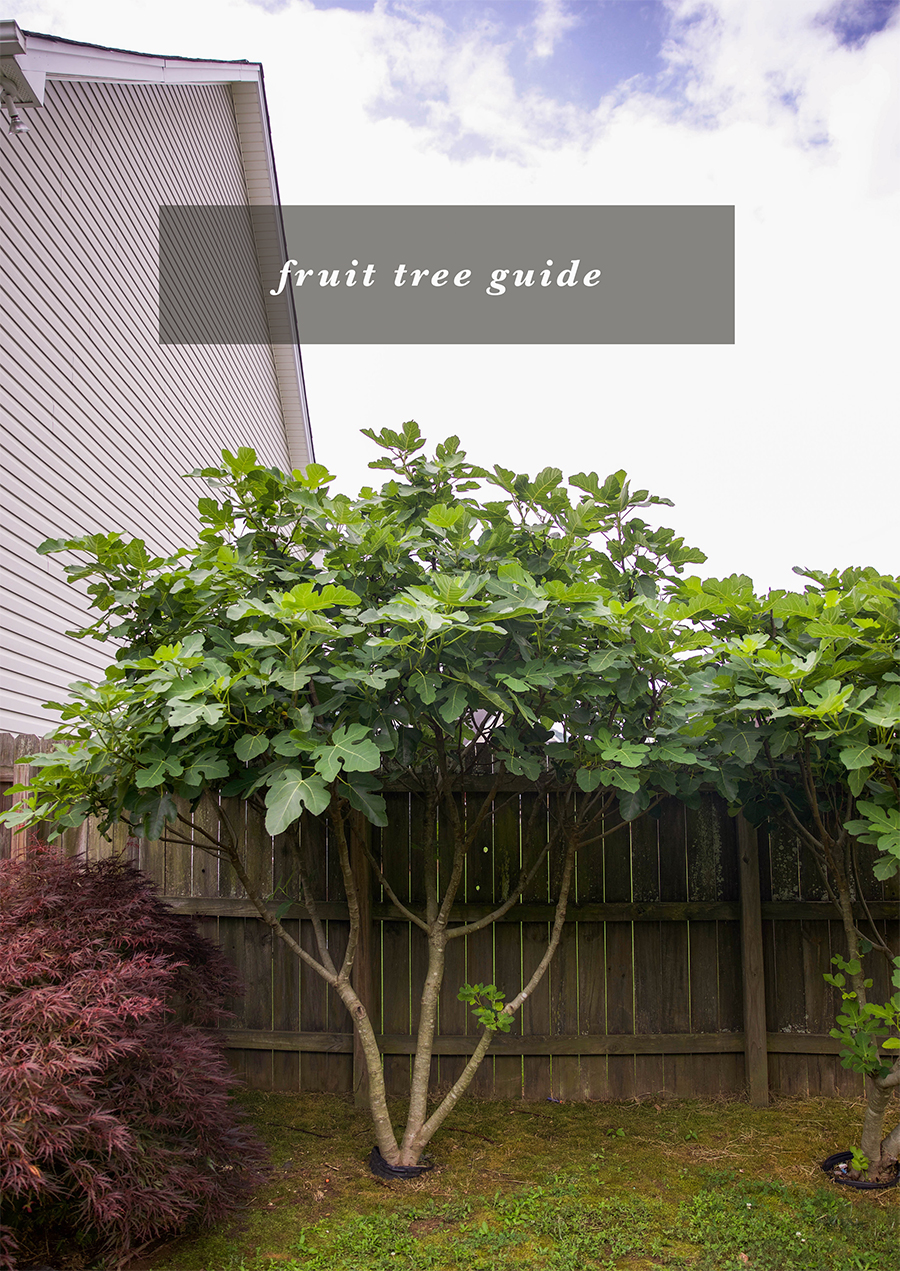
Today’s post is written by Gabe. (The one with the green thumb.)
For me one of the most bittersweet things about leaving this amazing place is leaving behind all of my beloved fruit trees and bushes. I have put many joyful hours in my yard nurturing my wooded children, it’s difficult to say goodbye. I planted them for my kids, as picking and eating their own fruit produces such sweet memories for a child (pun intended). This is the first year that most of these amazing fruit varieties will give a good crop, and although it is hard to leave before seeing the literal fruits of our labor, I am very happy that they will be passed on to the next amazing owners to enjoy. So here is an update on my green beauties before we say goodbye.
Brown Turkey Fig – We planted three Brown Turkey Figs (pictured above), which have all done well. Two are located next to a fence giving them some winter protection while the third is located in an open area. The tree in the open area does experience some cold damage during the winter, but always has recovered well in the summer. It took two years to begin production. After the third year each tree began producing two crops of fruit, a smaller crop in early to mid summer and a larger crop in early fall.
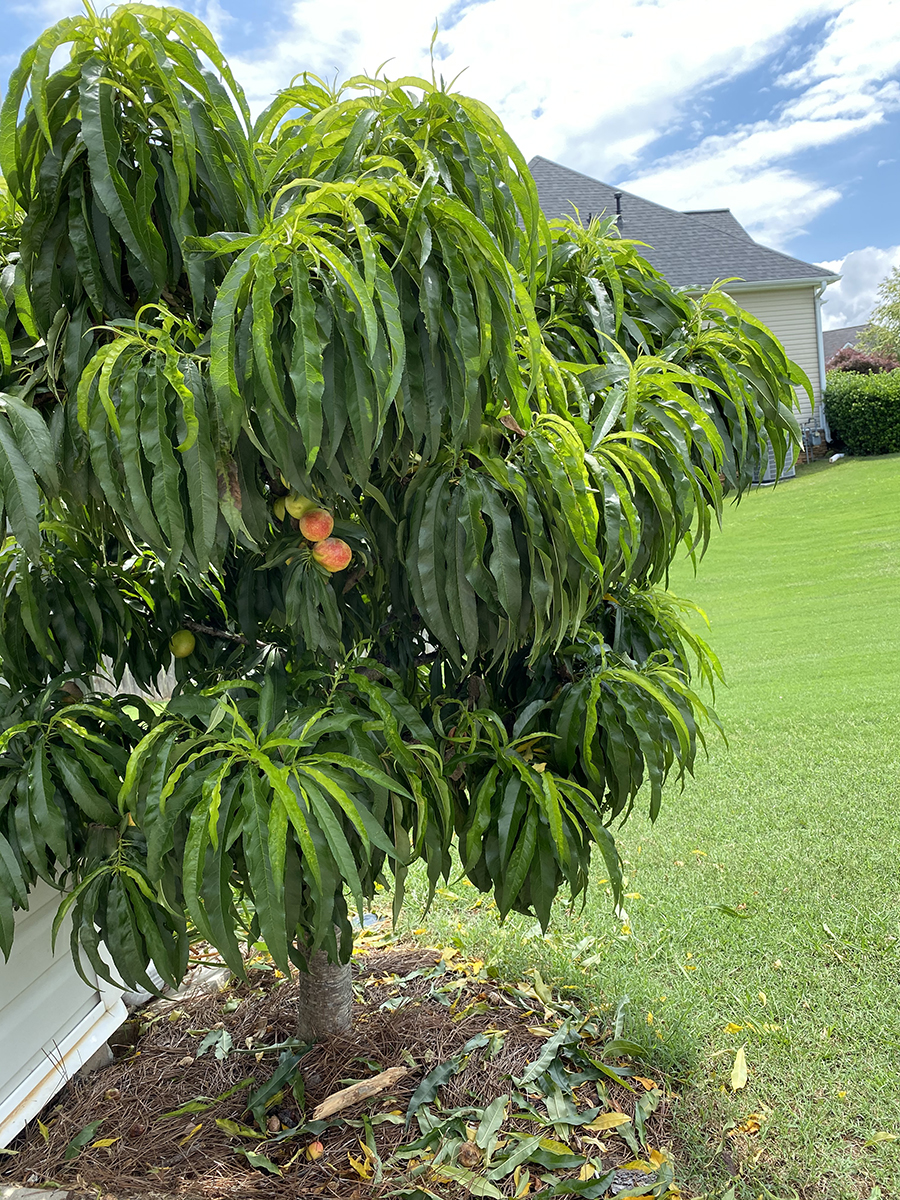
Bonanza Patio Peach – These two compact beauties are my pride. They were the first plants we planted after moving into the house and have done very well. Compact and beautiful, I bought them as ornamental trees for the front landscape and they have become the centerpiece that get the most attention in the landscape. I get asked regularly what they are and where to find them. The Bonanza Patio produces striking spring color and sets full size super sweet and juicy edible peaches of amazing quality. In our area they require a regular spray schedule to protect the fruit against pests and fungi, but, like our Southern peach out back, they are well worth the extra work to produce such amazing fruit.
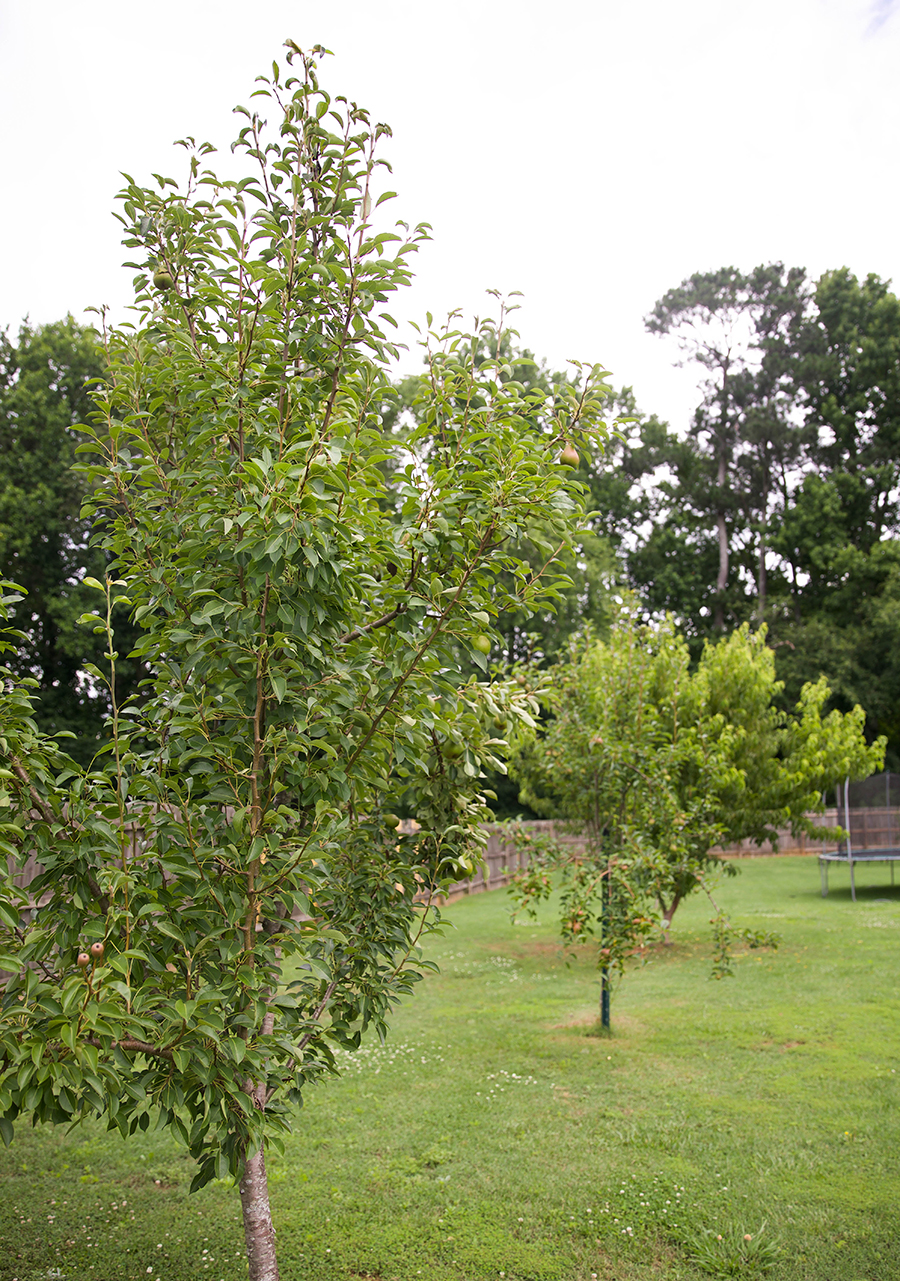
Moonglow Pear – Our Moonglow pear has taken 3 years to produce. This is the first year it has set fruit and I am bummed we will be moving before having the chance to sample our first home grown Moonglow. It is apparently known for its fruit quality. Moonglows are not self fertile, and require a second pollinator tree of a compatible pear species. Be sure both pear trees bloom at the same time.
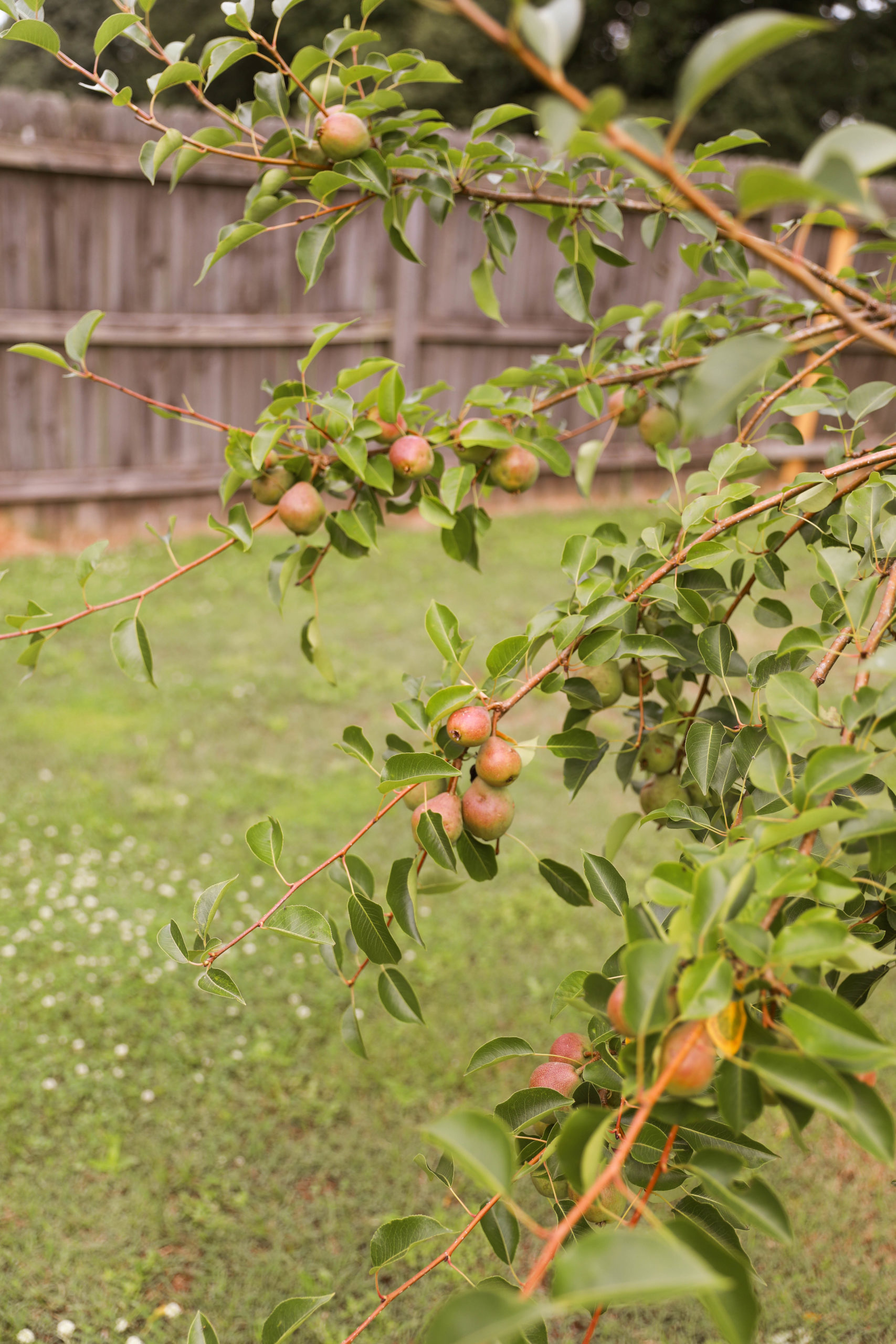
Keifer Pear – The Keifer pear took extremely well and is a rare example of a semi self fertile pear tree. It surprisingly set fruit in its first year after planting. This self pollinating fruit is hard and juicy, similar to an apple, but a bit grainy near the center. The fruit quality increases when cross pollinated with a compatible pear tree, such as a Moonglow. Unfortunately this is the first year that cross pollination has occurred, and we will not be able to compare fruit quality.
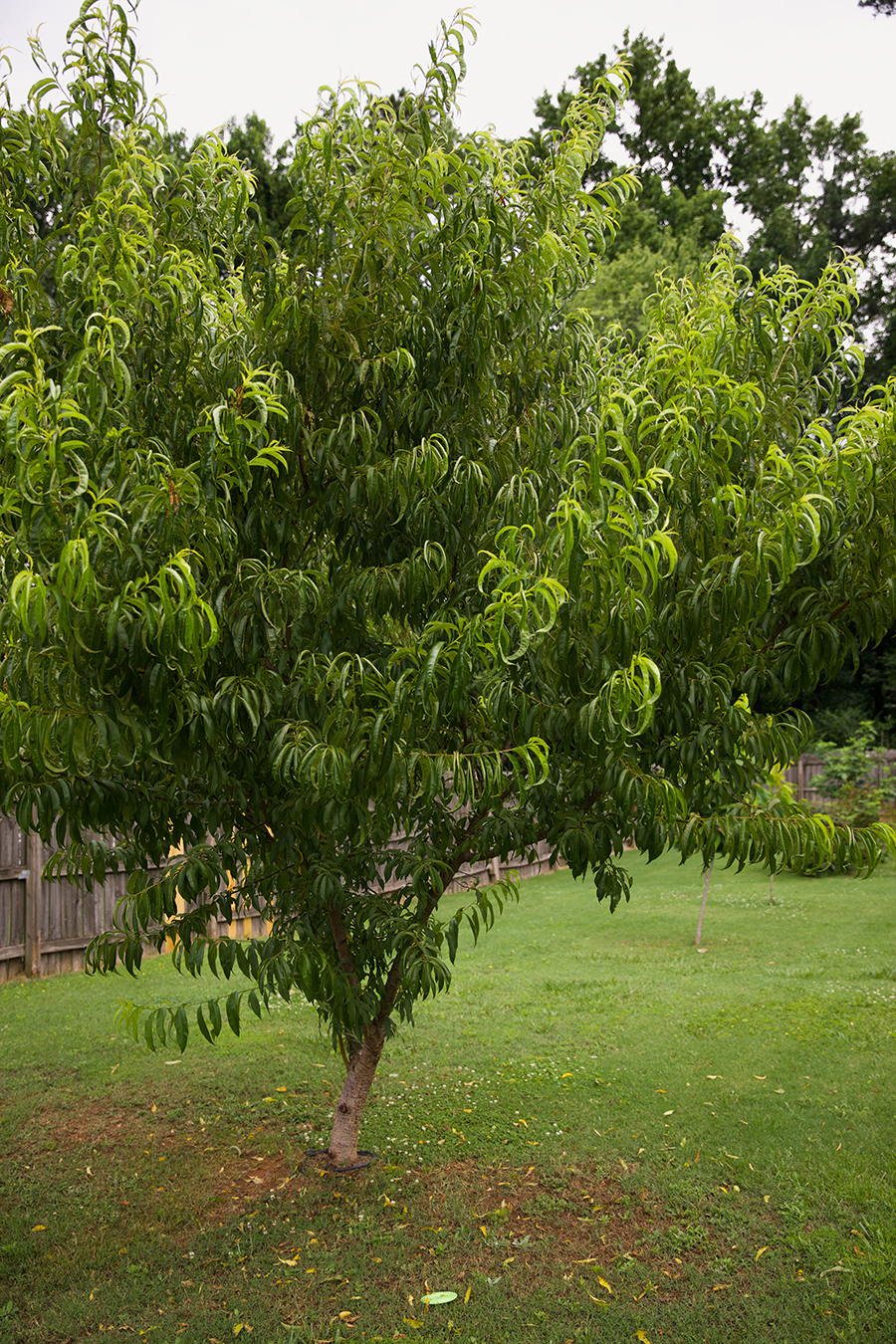
Southern Peach – This beauty has taken quickly and grown even faster, even after being transplanted twice in three years. It sets an abundance of fruit after two to three years, but is susceptible to numerous pests and fungi. If you can stick to a regular spray schedule you will much more likely be able to produce quality fruit. If you can stay consistent with the extra work you will be well rewarded with some of the best possible peaches.
Nanking Cherry – These have only been in the ground for a year, but are already growing quickly and I expect a good first crop of small bright red cherries to set next year. They seem to be super hardy, easily trimmed, and easy to maintain. Planting at least two is supposed to dramatically increase fruit production.

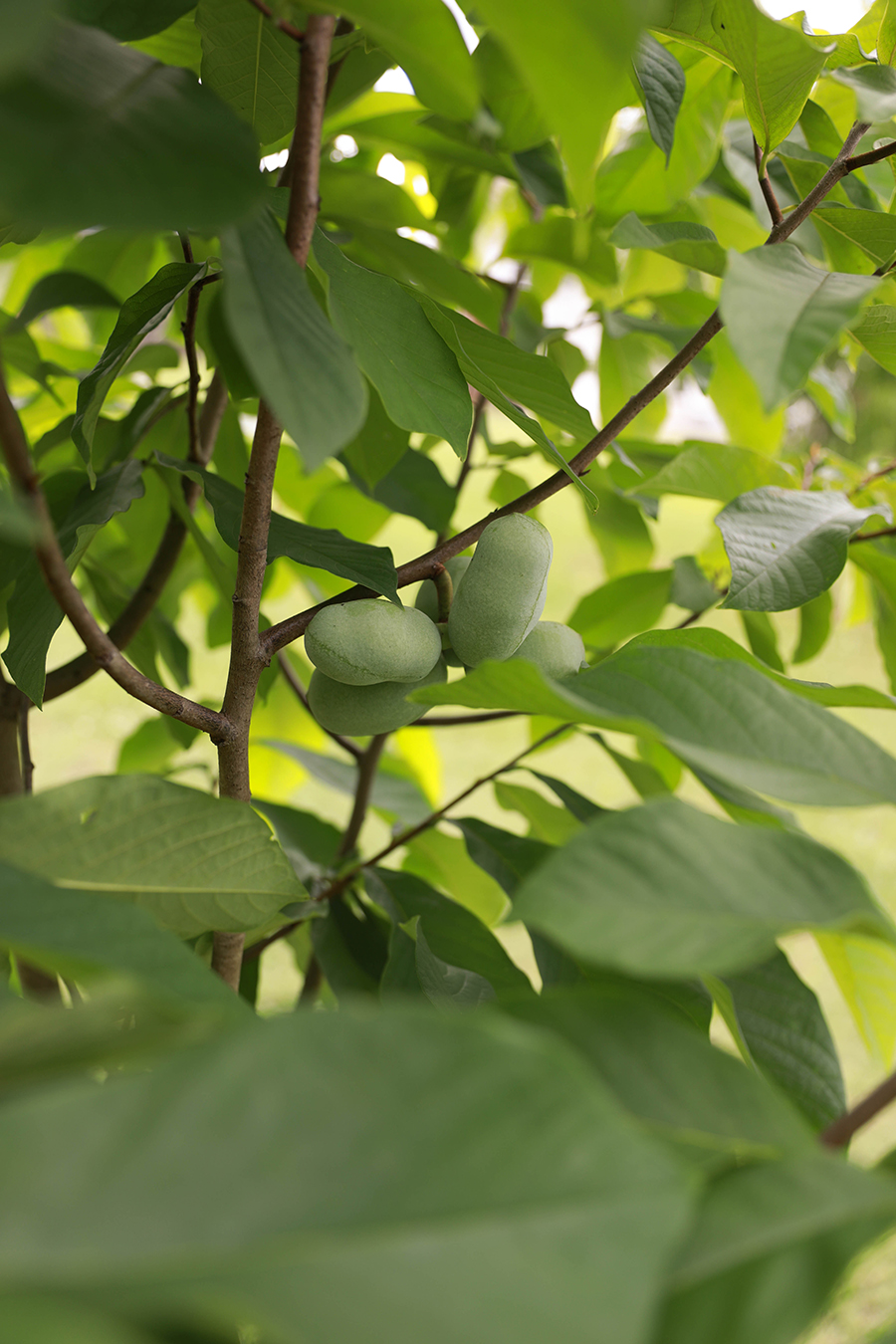
Paw Paw – Paw Paws are North America’s oldest native fruit tree. They take to the soil well, but require extra water for their first two years after planting while the roots are being established. Papaws are amazing slow growing compact trees that work anywhere in the landscape and I have found they do well in sun and partially shaded areas. They require two genetically different trees to produce fruit. They are pollinated by flies and beetles, so this year I hand pollinated some flowers to ensure that fruit set (hand pollination is super easy with a small artist’s paint brush). This is the first year that they set fruit at the same time, but again we won’t be able to enjoy the amazingly unique vanilla banana custard like fruit. They should not be picked off the tree, but fall off the tree when nearly ripe. Simply pick them up off the ground and wait until they finish ripening like a slightly brown banana before eating. I love these and will without a doubt be finding a place for them at our new house!
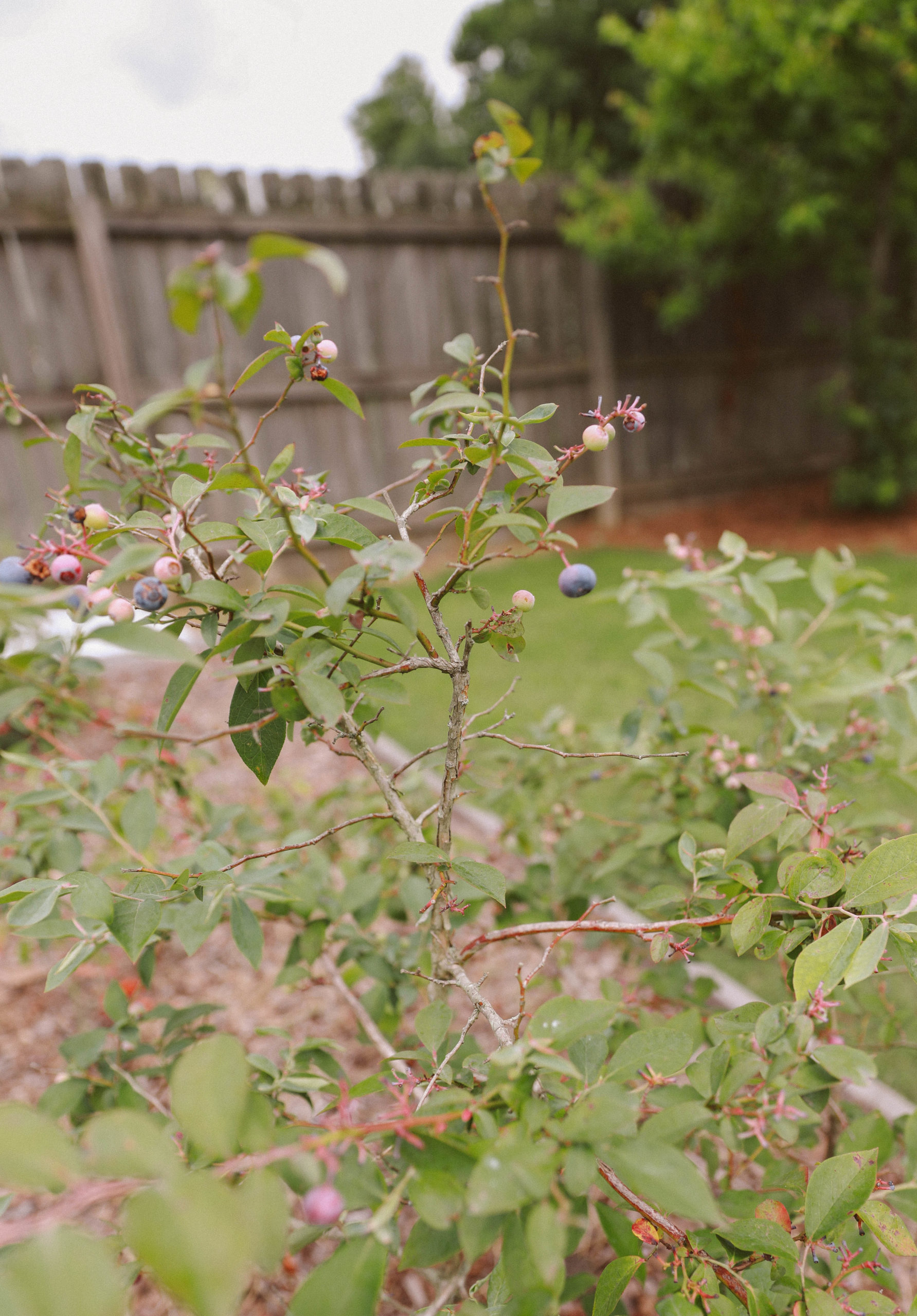
Blueberry bushes – We have six blueberry bushes, five of the 6 have done well, but only one has been in the ground more than 2 years. This older plant began producing well after three years, but most of the fruit has been pillaged by Rocco and Zel before anyone else can gather much. Little stinkers. I have found in our area it is critical to stick with a regular watering schedule while the bushes set their fruit. Also, blueberries like acidic soil, and it is important to check and amend the soil if necessary in order to ensure proper fruit production.

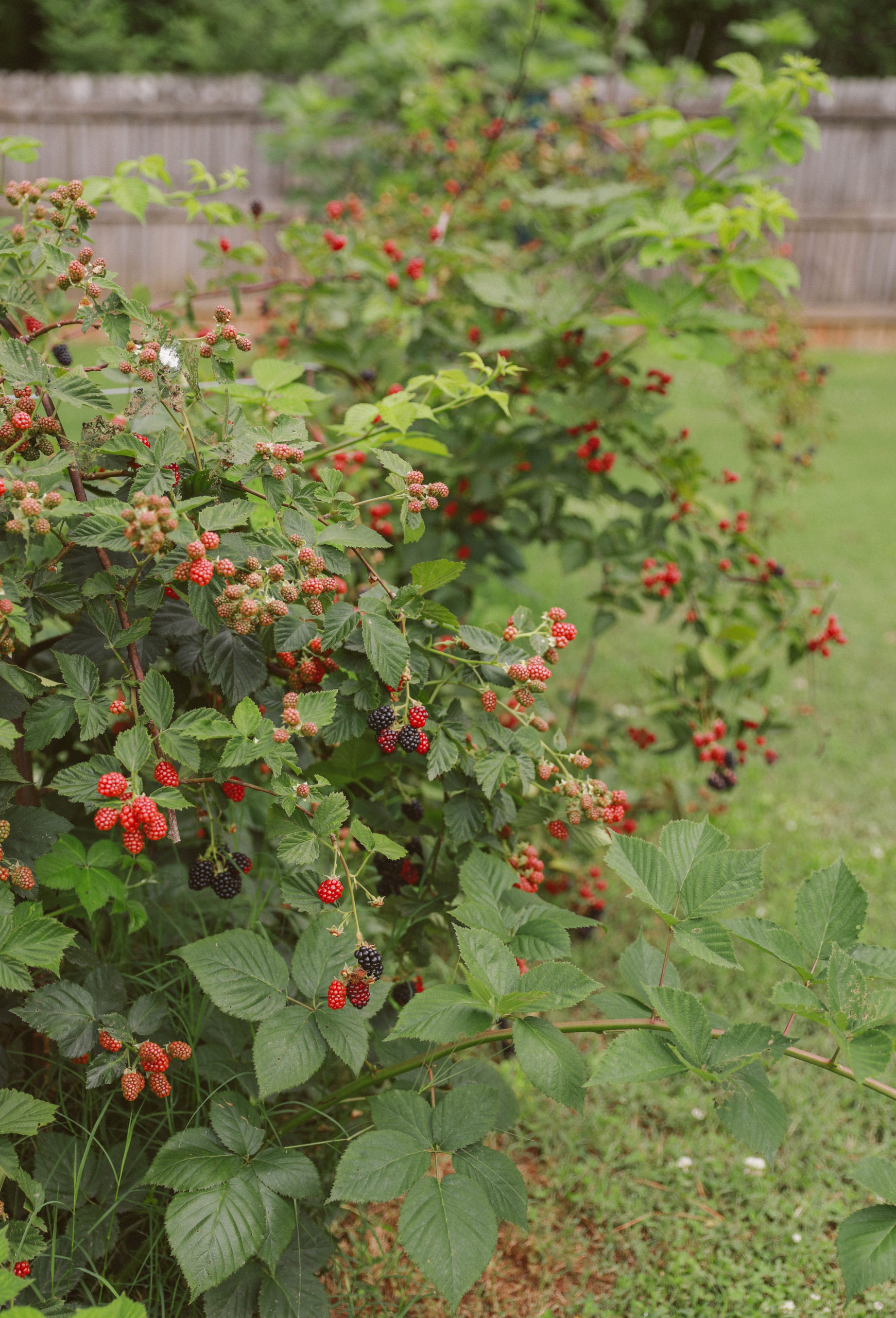
Thornless Blackberry – We planted three thornless blackberry bushes the year after moving in. It took two years to fully establish. On the third year they started producing so many massive juicy black berries we couldn’t keep up with the production, even with 5 sets of eager hands picking daily. I highly recommend planting a bush or two!
Hope this helps encourage you to start a fruit bush or tree in your own backyards. The contribute to simple joys in life! If you have any questions, please let me know below:)




















